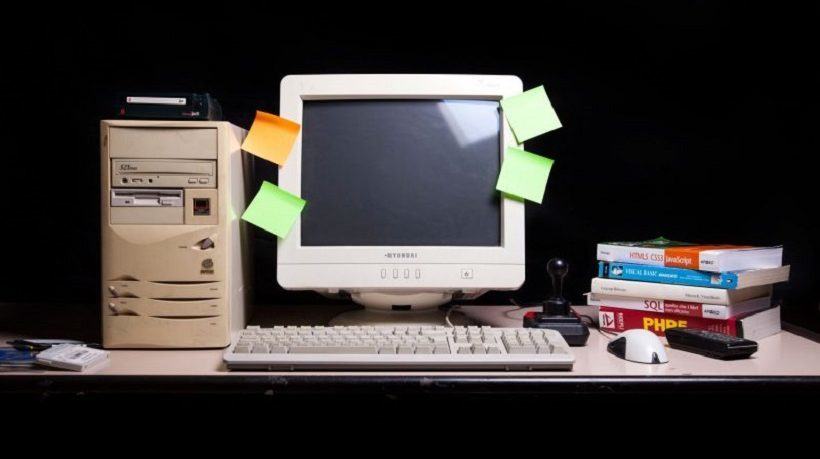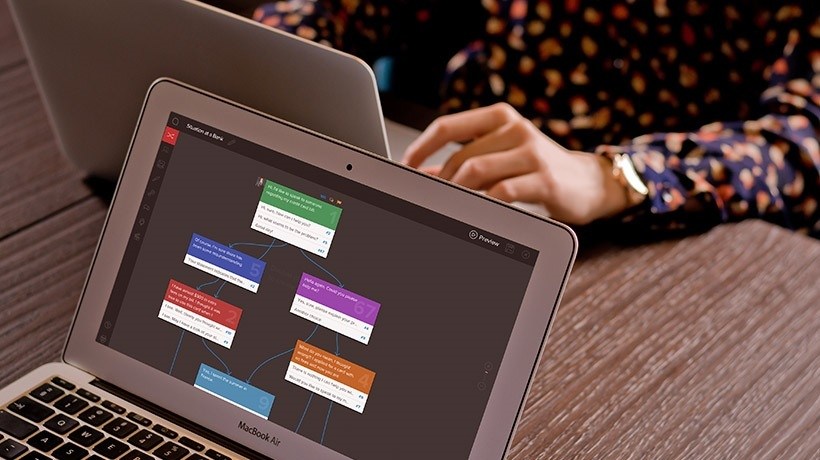5 Killer Examples Of Branching Scenario eLearning
In my last post we took a look at designing good scenario eLearning. In this post, we’ll take a look at some examples I think stand out, where good branching scenario eLearning demonstrates these guiding principles really well. So, let’s dive in.
Mini Scenarios
First up, ‘Mi Vida Loca’ by the BBC sits at the higher end of the production spectrum and helps learners of Spanish through an interactive TV mini series
- Good use of interactive video drama takes you on a mystery adventure.
- Episodic design with 22 episodes in all, 10 minutes each, covering basic learning points for beginner level Spanish.
- A learning section complements each episode and provides practice activities and opportunities to go through grammar and vocabulary in more detail at your own pace.
- Includes a speaking phrase book, which is a real person!
- Lots of audio practice and chances to listen and repeat.
In a mini-scenario, learners make a decision and are presented with a realistic consequence, which helps them decided if they made a good choice. They may then go on to a different scene representing a different situation. Most of the time, a one- or two-scene mini-scenario does the job fine, you needn’t stretch to 22 episodes like the BBC has done.
Branching scenarios
Mini-scenarios are good for covering an array of problem-solving activities, but they don’t facilitate learners going deeper into a complex situation.
For that, more complex branching scenarios are a good option, in which decisions that learners make in early scenes can affect what happens in later scenes. This helps learners practice skills such as:
- challenging their own assumptions
- recovering from mistakes and getting back on track
- dealing with ambiguous situations
- making decisions and carrying them through.
A great example of complex branching is ‘Connect with Haji Kamal’ by Cathy Moore & Kinection in which the learner is placed in the context of an inexperienced army officer in Afghanistan who needs to make several decisions during the course of just one conversation. Decisions that the learner makes at an early point in the story affects what happens at later points. The branching approach in this scenario eLearning helps challenge the learner in situations where deep change is involved, particularly around Western perspectives of developing relationships with Pashtun leaders, and recovering from mistakes when they occur.
‘Family of Heroes’ by Kognito is another excellent example of complex branching scenario eLearning. Focusing on just one conversation again, this scenario-based module helps the learner to see situations from another’s perspective, manage emotions, and recover from mistakes.
Branching helps you to fully plan how your scenario will play out. Think about how you want to illustrate information and how it will benefit your learners. Make sure you have all the background information you need, so your course will tell the story you are trying to portray and be as realistic as possible. Mapping the scenario will make it a lot easier to build your scenario.
Challenging learners
One of the main goals of using scenarios is to not just push information out to learners, but make them work for it. This will not only test their problem-solving skills but also increase learner engagement. You need to be able to set the learner a challenge so that they feel some kind of satisfaction when they achieve it and so there’s some focus for their learning.
'Broken Co-Worker' by Learnerengaged is a great example of the creative use of video, interactive scenarios and comic book creative design to challenge learners with a number of problem-solving activities.
- Good use of interactive video for context and feedback
- Inspired by the printed comic book layout gives it good visual appeal and a strong story-based structure.
'Patient Management' by Smart Builder takes learners through medical cases using investigative real life branching scenarios to help nurses practice the diagnosis and treatment of a sample of patient conditions. It demonstrates good design practice, providing:
- lots of patient information to help with diagnosis and treatment
- a framework for investigating the symptoms and likely causes
- feedback at different levels - diagnosis and treatment - so possible to succeed at one but fail at the other
- a chance to go back and attempt again, thus learning from mistakes and taking the feedback on board.
Scenario-based learning is all about placing learners into situations or contexts where you are telling them a story and require them to make decisions along the way.
- The aim is for the audience to learn by thinking about these decisions, making them, and then experiencing or seeing the consequences of those decisions. There is usually support information of some sort provided. But this support information is secondary, it’s the story and the decisions that drive the learning.
- Adult learners are driven by goals. They want to achieve things. Make sure you set a goal at the start of the scenario, e.g. making a sale or operating a piece of equipment.
- Stories are a great way of tying information together.
- Situations which require learners to take action by making decisions and seeing consequences is a much better way of learning than being passive.
Summary
Mini and full branching scenario eLearning is an effective way to engage and motivate learners to attempt challenges that provide a framework for safely practicing skills and knowledge. Done really well, as demonstrated in our examples, scenario eLearning takes learners deeper into problem-solving activities and provides a way of challenging assumptions, changing behavior and improving outcomes. Modern elearning tools can facilitate designing and building branching scenario eLearning quickly and simply. Can’t wish for more than that when designing great learning experiences.
Do you know of other examples of great scenario eLearning? We’d love it if you shared links in the comments below.








